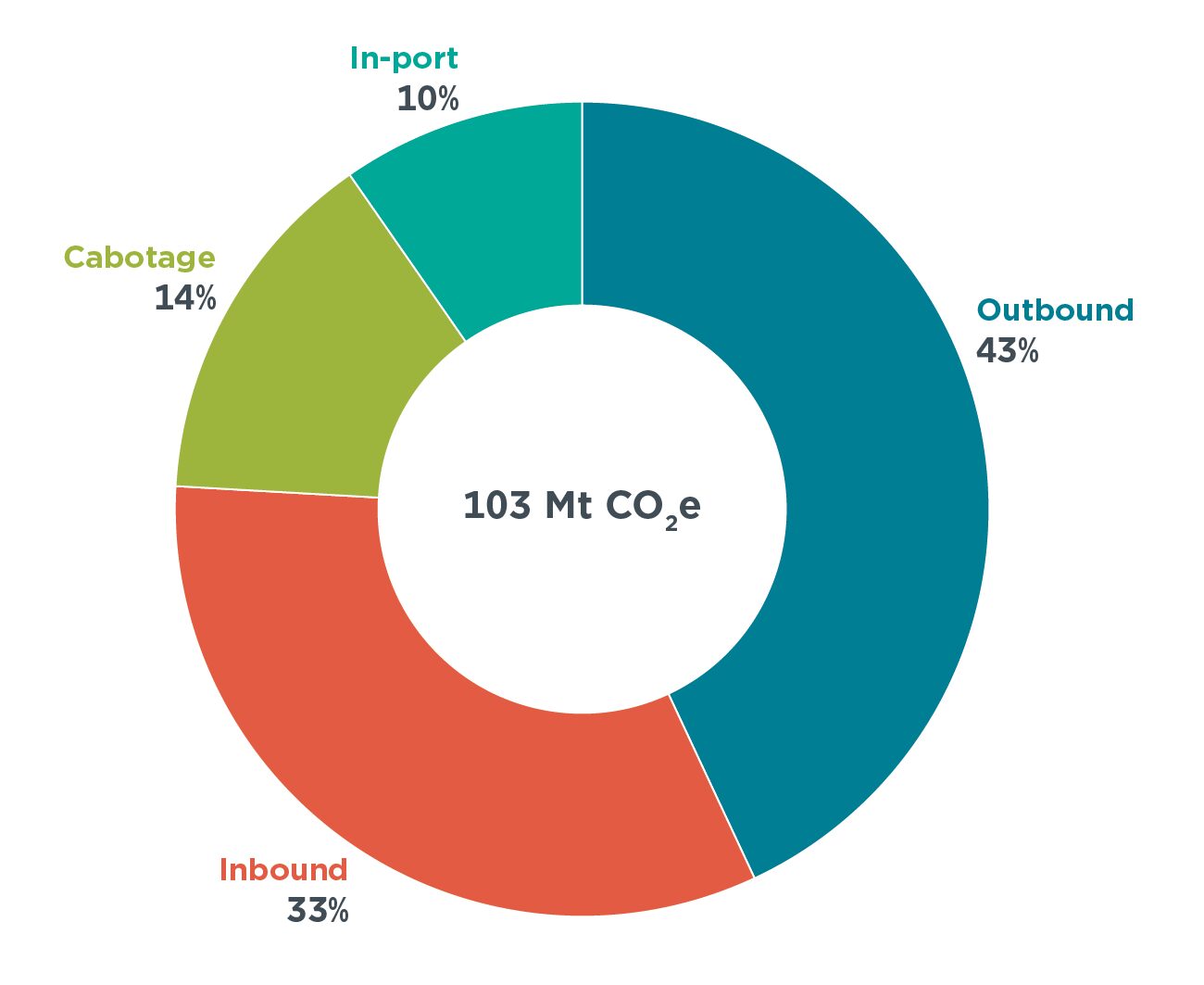Technical Brief
Estimating greenhouse gas emissions from U.S. maritime shipping: Potential benefits of a monitoring, reporting, and verification system
Establishing a U.S. Monitoring, Reporting, and Verification (MRV) system would fill important data gaps in official U.S. maritime emissions estimates, align U.S. practices with the European Union, and enable the U.S. to track progress toward climate goals.
This brief finds that a U.S. MRV program could have covered approximately 11,100 ships that together emitted approximately 103 million tonnes (Mt) of carbon dioxide equivalent (CO2e) emissions on voyages to, from, or between U.S. ports. This total is higher than official U.S. estimates of maritime emissions. Of the 103 Mt CO2e, 43% are from outbound voyages, 33% from inbound voyages, 14% from cabotage voyages, and 10% in ports. Similar to the European Union’s program, if half of the outbound and inbound emissions and all cabotage and in-port emissions were subject to a GHG price ranging from $70 (the EU MRV carbon price as of September 2024) to $230 per tonne of CO2e (EPA’s social cost of carbon estimate adjusted to 2024 dollars), the revenues could equal between $4.5 billion to $15 billion per year.
Figure. Million tonnes of CO2e emissions that would have been covered by a U.S. monitoring, reporting, and verification system in 2022, summarized by voyage type

